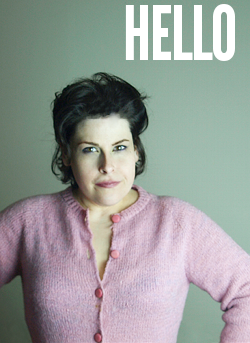Say Something Amazing
By Jessica Albon

Image by mardi grass 2011
If you want to grow your audience, you’ve got to get your readers sharing what you write. That means getting your readers to forward every newsletter you send, and to share all those blog posts you toil over.
One thing that’s great about newsletters is you can check to see how many of your readers are forwarding each issue. What numbers should you be aiming for? That depends on your list size:
- For lists of under 100 subscribers, you can expect 5% of your readers to forward each issue.
- For lists of 100-1000 subscribers, you can expect 7-10% of your readers to forward each issue.
- For lists of 1000-10000 subscribers, you can expect about 10% of your readers to forward each issue.
- For lists above 10,000 subscribers, you’re usually looking at about 5% of your subscribers forwarding each issue.
If you AREN’T getting this rate of forwarding, you’re missing out on one of the best ways to grow your audience. And, the most common reason for not hitting these numbers is not Saying Something Amazing.
(You can track your blog shares, too, but that’s trickier because there are so many ways to share a single blog post. So, that means it’s likely your statistics will be lower than those shared above.)
There are four ways to Say Something Amazing, but because I have so much to say on each of the four, today we’re just going to focus on one:
Say Something Inspirational!
Lest you think, “My audience would never stand for me being inspirational!” don’t worry. I’m not talking about swelling music tales of inspiration or motivational poster catch phrases. There are lots of ways to inspire your readers.
Case Studies as Inspiration
My favorite way to inspire readers is by sharing great case studies–stories of people just like your audience who’ve accomplished something huge, with your help.
But, you can’t just write up any old case study and expect it to be inspiring and share-worthy.
What prevents case studies from being amazing? Leaving parts out (i.e. not telling the complete story) and being too focused on making your sales pitch.
You can avoid these issues by starting your case study before your involvement. Paint a picture of what was wrong before your client hired you or purchased your product.
By starting at the beginning of the story–with the *conflict* and the *characters*–you’re writing a whole story instead of just the climax. This helps you write a well-rounded story that includes all the parts and doesn’t hyper focus on a sales pitch (because you’re starting before you arrived on the scene). So really dig in and reveal the situation fully.
My favorite question to ask when I’m writing a case study for a client is:
What was going so wrong before you hired us? What was it that made you say, “That’s enough! We have to get help.”
Flesh that initial problem out in as much detail as possible. Then, move into your entry on the scene–paint yourself as the hero (because, in this story, you are). Tell readers what you did and how it helped.
Only after you’ve set the scene and taken your characters through a complete story do you come to the final resolution. That’s how you create an inspiring case study!
What’s more, this style of case study is a natural sales pitch for your services so you won’t need to add any thing at the end. This means it won’t read as sales-y to your reader (because it’s not) but will still be effective at getting you new clients.
Other Forms of Inspiration
Of course, case studies aren’t the only way to be inspirational–you can share powerful quotes with your readers, or gorgeous photos.
And, again, both of these can be done in a very professional way, or in a more informal, traditionally “inspiring” way.
To keep it formal, one great way to inspire your readers with photos is to share transformational before and after photos. It’s pretty clear to see how a business like a landscaping business or an organizing professional would be able to capture powerful before and after photos to publish and how inspiring that can be for readers.
If your products or services don’t accomplish something that’s particularly visual, though, you can use charts or photos of the results–for instance, if you’re a direct mail copywriter who created a campaign that brought several hundred buyers through the doors for one of your clients, you could share a photo of the empty store shelves, or the people lined up outside to get in.
If you decide that you want to use inspiring quotes, you can turn to industry experts or well-known professionals (for instance, quotes from Barbara Hemphill or David Allen if you’re looking for inspirational quotes about getting organized).
By making sure you Say Something Amazing every time, you’ll motivate readers to forward it to their friends and colleagues. Saying something inspirational is an especially powerful way to Say Something Amazing because everyone’s looking for more doses of inspiration in their day–and people love to share things that inspire them.
If you want to grow your audience, you’ve got to make sure you Say Something Amazing. It’s a great way to get your readers sharing and to grow your Tribe.
Blog








